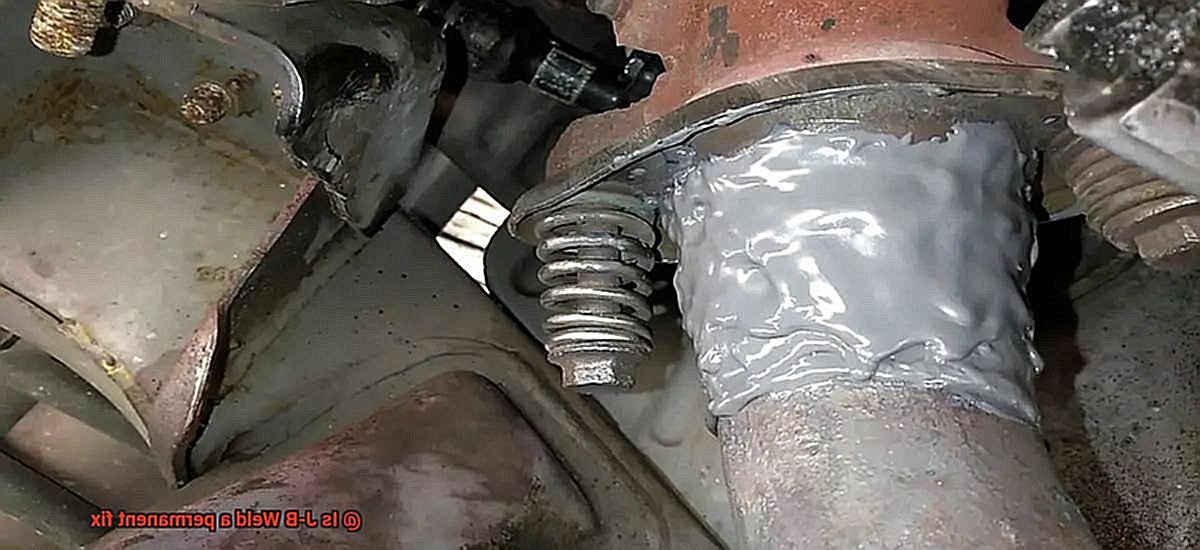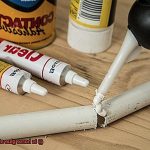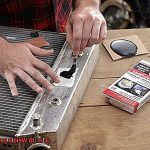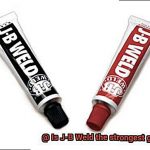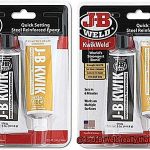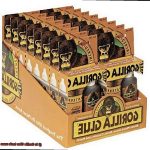Had enough of dealing with broken stuff around the house, car troubles, or plumbing nightmares? Say hello to J-B Weld, the legendary epoxy adhesive that claims to be a magic wand for all your repair needs. But here’s the catch – does it really work like a charm, or is it just a temporary patch-up job waiting to fall apart?
In this blog post, we’re diving deep into the world of J-B Weld to uncover its true powers and limitations. We’ll explore what both regular folks and experts have to say about this popular adhesive, so you can make an informed decision when faced with your next repair dilemma.
With our wealth of experience in the field, we’re here to give you the lowdown on whether J-B Weld lives up to its promise of being a permanent fix or if it’s more like putting a Band-Aid on a sinking ship. So buckle up and let’s get down to business – it’s time to settle this burning question once and for all.
What is J-B Weld?
Contents
- 1 What is J-B Weld?
- 2 How Does J-B Weld Work?
- 3 The Strength of J-B Weld
- 4 Advantages and Disadvantages of Using J-B Weld
- 5 Proper Preparation for Bonding with J-B Weld
- 5.1 Step 1: The Sacred Ritual of Cleanliness
- 5.2 Step 2: Roughing It Up for Maximum Adhesion
- 5.3 Step 3: The Art of Bareness
- 5.4 Step 4: The Dance of Equilibrium
- 5.5 Step 5: The Artful Application
- 5.6 Step 6: The Sacred Union
- 5.7 Step 7: The Patience of a Hero
- 5.8 Step 8: Cleaning Up the Epic Battle
- 5.9 Conclusion:
- 6 Curing Time for Maximum Strength
- 7 Is J-B Weld Suitable for All Repairs?
- 8 Long Term Durability of the Bond Created by J-B Weld
- 9 Conclusion
J-B Weld is not your ordinary adhesive. It is a two-part epoxy adhesive that packs a powerful punch when it comes to creating strong and durable bonds. Made up of a resin and a hardener, this adhesive undergoes a chemical reaction when mixed together, resulting in a bond that can rival the strength of the materials being joined.
Surface preparation plays a crucial role in the effectiveness of J-B Weld. Before applying the adhesive, it is essential to thoroughly clean the surfaces and remove any dirt, grease, or contaminants. This ensures optimal adhesion and increases the chances of a long-lasting bond.
Following the manufacturer’s instructions is key to achieving the best results with J-B Weld. This includes mixing the components in the correct ratio and allowing sufficient curing time. While J-B Weld typically cures within 4-6 hours, for maximum strength, it is recommended to wait 24 hours before subjecting the repaired item to stress or load.
When used correctly, J-B Weld can provide durable repairs that can withstand harsh conditions. The bond created by J-B Weld is resistant to heat, chemicals, and harsh environments. It can handle temperatures up to 550 degrees Fahrenheit (288 degrees Celsius) and is resistant to water, oil, gasoline, acids, and many other solvents and chemicals commonly encountered in automotive and industrial settings.
However, it is important to consider the specific application and circumstances when determining if J-B Weld is a permanent fix. While it excels as an adhesive for many materials and situations, it may not be suitable for all types of repairs. For example, if flexibility or constant movement is required after bonding, J-B Weld may not be the best option.
In some cases, the bond created by J-B Weld may become brittle over time, especially if subjected to extreme temperatures or constant vibrations. However, under normal conditions and when used in appropriate applications, J-B Weld can provide reliable and long-lasting repairs.
How Does J-B Weld Work?
Say goodbye to weak adhesives that buckle under pressure and welcome the superhero of adhesives – J-B Weld. This two-part epoxy adhesive creates unbreakable bonds that can withstand even the toughest challenges. So, grab your cape and let’s dive into the fascinating world of J-B Weld.
Unleashing the Chemical Transformation:
J-B Weld’s superpower lies in its two-part epoxy formula. When the resin and hardener are mixed, a chemical transformation occurs, turning them into a solid material. This powerful process creates a bond that can withstand extreme temperatures, pressure, and vibrations – making it perfect for a wide range of applications.
The Incredible Molecular Bond:
Once applied, J-B Weld penetrates deep into surfaces, forming a strong molecular bond. It’s like a superhero’s grip, interlocking with materials and creating an unbreakable network of molecules. This molecular bond provides exceptional strength and durability, ensuring that repairs stand the test of time.
Versatility at Its Finest:
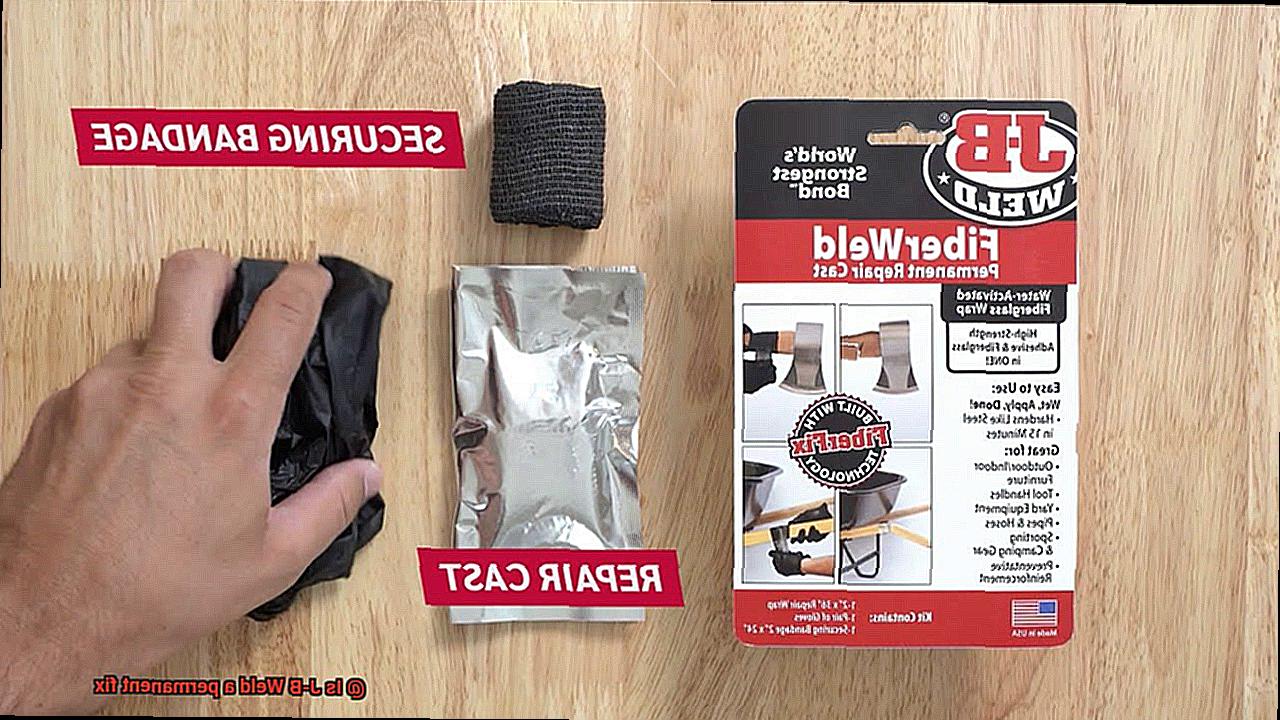
J-B Weld isn’t your average adhesive; it’s a versatile superhero that can bond to almost any surface. Whether it’s metal, wood, plastic, ceramic, or even concrete, J-B Weld has got you covered. Plus, it’s resistant to chemicals, water, oil, and gasoline – perfect for automotive repairs and other demanding applications.
Curing Time: The Final Transformation:
Just like any superhero needs time to reach their full potential, J-B Weld requires curing time. The exothermic curing process releases heat as it solidifies, speeding up bond formation. While it typically takes 4-6 hours for J-B Weld to set, giving it 15-24 hours ensures maximum strength. Waiting may be tough, but trust us, it’s worth it.
J-B Weld is the ultimate solution for all your repair needs. Its strong molecular bond, versatility, and resistance to harsh conditions make it a reliable choice for professionals and DIY enthusiasts alike.
However, like any superhero, J-B Weld has limitations. It may not be suitable for applications requiring constant movement or flexibility. Additionally, extreme temperatures and vibrations might affect its long-term durability. But in normal conditions and suitable applications, J-B Weld is the reliable ally you’ve been looking for.
The Strength of J-B Weld
Say goodbye to all your frustrations with J-B Weld, the adhesive that lives up to its name. With its incredible strength and durability, J-B Weld is the ultimate solution for any repair or project.
What sets J-B Weld apart from other adhesives is its two-part epoxy composition. When the resin and hardener are combined in equal parts, a chemical reaction occurs, creating a bond that can withstand extreme temperatures, pressure, and vibrations. It’s like having a welder in a tube.
But J-B Weld isn’t just strong; it’s also versatile. This adhesive can bond metal, wood, plastic, ceramic, and more. Whether you’re fixing a broken metal bracket or repairing a cracked plastic component, J-B Weld has got you covered.
And let’s talk about strength. J-B Weld exhibits outstanding tensile strength, shear strength, and impact resistance. It can resist pulling forces, withstand pushing or sliding forces, and endure sudden shocks or impacts without breaking a sweat. It’s like having a superhero on your side when it comes to repairs.
But wait, there’s more. J-B Weld is also resistant to water, chemicals, and many solvents, adding another layer of durability to its already impressive resume. You can trust this adhesive to hold up in even the toughest environments.
However, it’s important to note that while J-B Weld is incredibly strong, it may not be suitable for all situations. Flexible materials or surfaces exposed to constant movement or extreme temperatures may not be ideal candidates for J-B Weld. It’s always best to read the product instructions and test the adhesive on a small area before tackling larger or critical applications.
Advantages and Disadvantages of Using J-B Weld
Look no further than J-B Weld, the adhesive that lives up to its name. With its superhero-like strength and durability, J-B Weld is the ultimate solution for all your bonding needs. In this blog post, we’ll explore the advantages and disadvantages of using J-B Weld, empowering you to make an informed decision when choosing the right adhesive for your next project.
Advantages of Using J-B Weld:
Unyielding Bond:
J-B Weld is renowned for its unparalleled ability to create a rock-solid bond between different surfaces. Whether you’re working with metal, wood, plastic, ceramic, or other materials, J-B Weld can securely fuse them together with ease.
Resistant to Extreme Heat:
When it comes to applications involving high temperatures, such as automotive repairs or engine components, J-B Weld is the adhesive you can rely on. It fearlessly endures temperatures up to 550 degrees Fahrenheit (287 degrees Celsius), ensuring a steadfast bond even in the most scorching conditions.
Remarkable Versatility:
J-B Weld is a jack-of-all-trades adhesive that proves invaluable in a myriad of repair scenarios. From fixing cracked pipes to repairing broken tool handles or furniture, J-B Weld offers a durable and long-lasting solution for a wide range of applications.
Effortless Application:
Even if you’re a novice when it comes to adhesives, fear not. Using J-B Weld is as simple as it gets. Its two-part epoxy system consists of a resin and a hardener that are harmoniously blended together before application. Once mixed, the adhesive can be applied to the surfaces that need to be bonded and left to cure.
Disadvantages of Using J-B Weld:
Patience is Required:
One drawback of using J-B Weld is its relatively prolonged curing time. Depending on the specific product and conditions, it may take several hours or even overnight for the adhesive to fully cure and reach its maximum strength. This can be inconvenient if you’re in a hurry or working on time-sensitive projects.
Rigidity Can Be a Limitation:
While J-B Weld excels in creating an unyielding bond, it lacks flexibility once cured. If you’re working with materials that require some degree of flexibility or movement, such as rubber or certain plastics, J-B Weld may not be the optimal adhesive choice. Over time, it can become brittle and prone to cracking, compromising the integrity of the bond.
Irreversible Commitment:
Once J-B Weld has fully cured, it solidifies into a permanent fix, making it challenging to remove or undo. If you make a mistake or need to disassemble the bonded parts, it may require significant effort and potentially damage the materials in the process.
Aesthetics Consideration:
Depending on the application, the appearance of the J-B Weld bond may not always be aesthetically pleasing. The adhesive typically dries to a dark gray color, which may be noticeable and stand out on certain surfaces. This can be a disadvantage if you’re seeking a seamless and invisible repair.
Proper Preparation for Bonding with J-B Weld
Brace yourselves because I’m about to reveal the secret to achieving a bond that even superheroes would envy – it all starts with proper preparation. So, strap on your cape and get ready for an adventure into the world of J-B Weld bonding.
Step 1: The Sacred Ritual of Cleanliness
Prepare for the ultimate bonding experience by cleansing the surfaces that are destined to be united. Embrace the power of a suitable solvent like acetone or denatured alcohol. Banish every speck of dirt, grease, or oil from these surfaces. Remember, a clean foundation is the key to a bond that stands the test of time.
Step 2: Roughing It Up for Maximum Adhesion
Now that your surfaces are pristine, it’s time to unleash their potential by roughening them up. Grab your trusty sandpaper or file and create a tantalizingly textured surface. This roughness provides an irresistible grip for the epoxy, ensuring a bond that can withstand even the mightiest forces.
Step 3: The Art of Bareness
J-B Weld thrives on direct contact with bare metal surfaces. If any paint or coating dares to stand in its way, eliminate it with unyielding resolve. Employ sandpaper, a wire brush, or a chemical paint stripper as your arsenal. Remember, superheroes need unrestricted access to showcase their true power.
Step 4: The Dance of Equilibrium
The moment has arrived to mix the dynamic duo – resin and hardener. Like a cosmic alignment of forces, follow the instructions on the package meticulously. Choose your disposable tool wisely – a popsicle stick or a disposable brush – as you blend them harmoniously. This fusion activates the superpowers of the epoxy itself.
Step 5: The Artful Application
Prepare to embark on an artistic journey as you apply the mixed epoxy to your project. Allow just enough epoxy to cover the bonding area, but beware the chaos of excessive overflow. We seek precision in our creation, not a sticky mess.
Step 6: The Sacred Union
Press the two surfaces together with unwavering determination, ensuring perfect alignment and unbreakable contact. Embrace the power of continuous pressure for a few minutes, allowing the initial bond to take shape. It’s like witnessing a superhero handshake – a meeting of extraordinary strength.
Step 7: The Patience of a Hero
The path to greatness requires patience. Depending on environmental conditions, J-B Weld may need several hours or even up to 24 hours to fully cure. Allow it the time it needs to develop its unrivaled strength before subjecting it to any stress or load. Remember, true heroes are forged through time and resilience.
Step 8: Cleaning Up the Epic Battle
If you find yourself facing an excess of epoxy, fear not. Once it has partially cured, eliminate any remnants with a suitable solvent like acetone or mineral spirits. Tread carefully, ensuring your newly bonded masterpiece remains unharmed.
Conclusion:
Congratulations, valiant comrades of adhesive mastery. By embracing these sacred preparation rituals, you are now equipped to forge bonds that even the mightiest superheroes would admire. Remember, cleanliness, roughening, alignment, and patience are the secret ingredients that unlock the true power of J-B Weld. Now go forth and conquer with your flawlessly bonded creations.
Curing Time for Maximum Strength
Today, we embark on an extraordinary journey, unlocking the secrets behind J-B Weld’s curing time and its role in creating unbreakable bonds. So strap on your tool belts, because we’re about to dive deep into the realm of maximum strength.
Curing Time: The Key to Eternal Bonding
Imagine a realm where broken objects remain shattered forever. Fortunately, J-B Weld swoops in as the hero of this tale. Curing time signifies the enchanting process where the adhesive solidifies and hardens, transforming into an unstoppable force. It’s like granting your project an impenetrable shield.
Influencing Factors: The Dance of External Elements
Just as superheroes are influenced by external forces, J-B Weld’s curing time is subject to various factors. Temperature, humidity, and the materials being bonded all play significant roles in this thrilling saga. Higher temperatures quicken the process, while lower temperatures slow it down. Beware of high humidity levels—they may attempt to sabotage your bonding mission.
Embrace Instruction Manuals: The Sacred Scrolls
Every superhero understands the importance of following instructions to achieve victory. The same applies to utilizing J-B Weld. The manufacturer’s instructions hold invaluable guidance regarding the specific curing time for each product. Disregard their wisdom at your own risk.
The Virtue of Patience
Patience is a virtue that every superhero possesses. After applying J-B Weld, resist the urge to leap into action. Allow it at least 24 hours to cure completely and reach its maximum strength. Remember, greatness awaits those who wait.
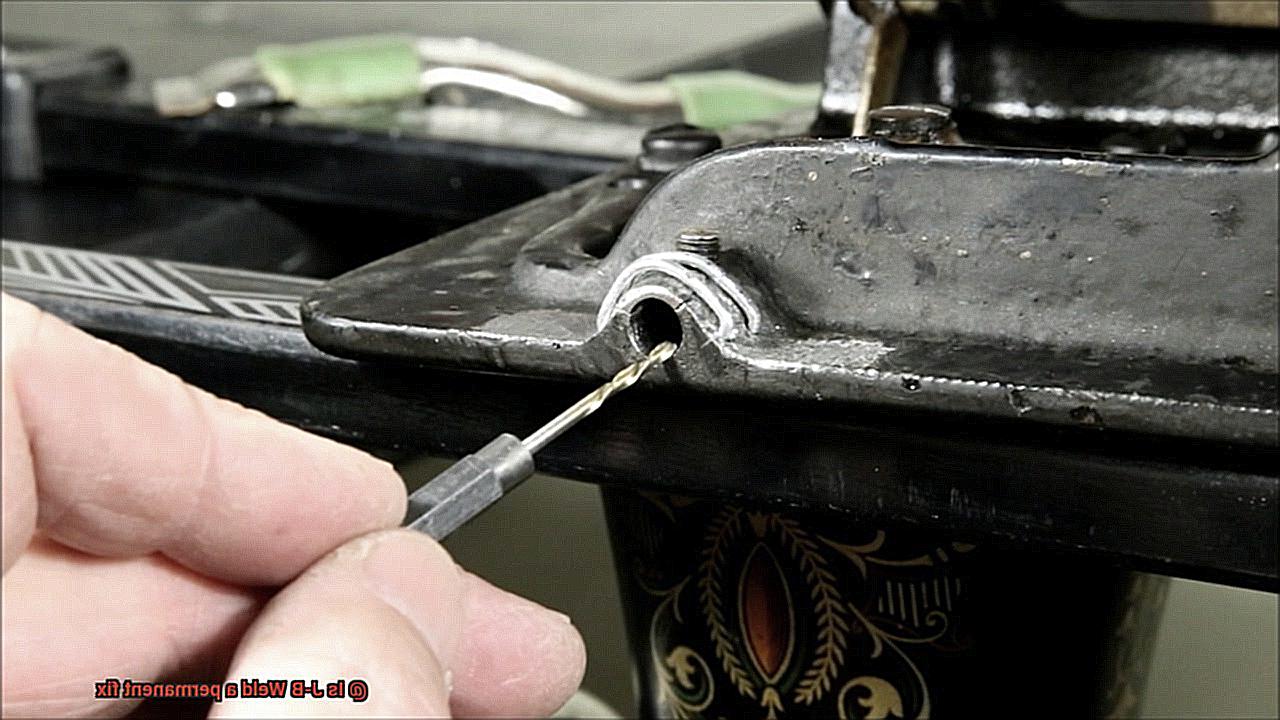
The Clamping Crusade
Even superheroes occasionally require assistance to unlock their full potential. In certain cases, applying pressure or clamping the bonded parts together during the curing process works wonders. This ensures optimal contact between surfaces and eradicates any weak spots in the bond.
Strength Evolves Over Time
Similar to a superhero’s powers growing stronger with experience, J-B Weld continues to harden over an extended period. Even after the recommended curing time, exercise caution and avoid subjecting the bonded area to excessive stress or load for a few days. Allow your bond the time it needs to solidify and become virtually indestructible.
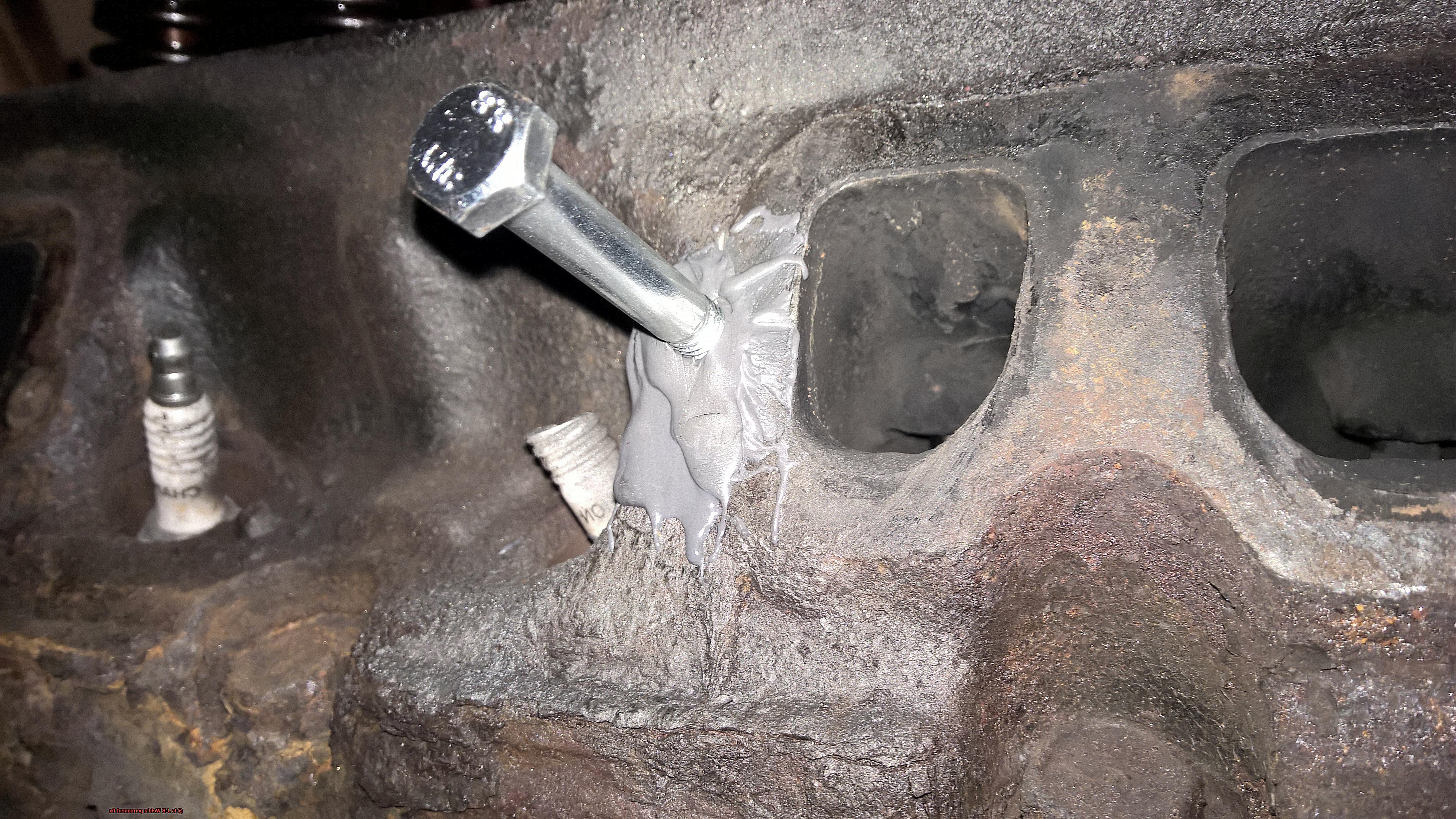
Is J-B Weld Suitable for All Repairs?
When it comes to repairs, J-B Weld is often hailed as the superhero of adhesives. Its strength and durability make it a popular choice for various applications, from fixing automotive parts to repairing household items. However, like any superhero, J-B Weld has its limitations and may not be suitable for all types of repairs. Let’s dive into the reasons why.
Material Compatibility:
J-B Weld works best on materials such as metal, wood, ceramics, and some plastics. It forms a strong bond with these materials, providing a reliable fix. However, it may not adhere well to certain types of plastics or rubber.
So, before reaching for that tube of J-B Weld, make sure to check the product instructions and guidelines to ensure compatibility with the material you’re working with. Using J-B Weld on incompatible materials may result in a weak bond or even complete failure.
Nature of the Repair:
J-B Weld forms a permanent bond that is difficult to undo or remove. This makes it ideal for repairs that require a strong and long-lasting fix. If you need to mend a broken metal bracket or repair a cracked ceramic vase, J-B Weld can be your trusty sidekick.
However, if the repair needs to be reversible or adjustable, J-B Weld may not be the best choice. For example, if you need to disassemble the repaired item in the future, J-B Weld may pose a challenge. In such cases, it’s worth considering alternative adhesives that offer more flexibility.
Temperature and Extreme Conditions:
While J-B Weld can withstand moderate temperatures and some exposure to water, oil, or chemicals, it may not hold up well in extreme heat or harsh environments. If your repair involves high temperatures or extreme conditions, such as an exhaust manifold or underwater pipe repair, it’s worth considering alternative adhesives or repair methods that are specifically designed for those conditions. Ignoring these limitations may result in a weakened bond or even failure of the repair.
Specific Requirements or Limitations:
Every repair is unique, and some may have specific requirements or limitations that J-B Weld may not meet. It’s important to assess the specific needs of your repair and consult with an expert or refer to the manufacturer’s guidelines to determine if J-B Weld is suitable. For example, if you’re working on a repair that requires electrical insulation, J-B Weld may not be the best choice. In such cases, specialized adhesives designed for electrical applications would be more appropriate.
Long Term Durability of the Bond Created by J-B Weld
Prepare to be amazed by the extraordinary long-term durability of the bond created by J-B Weld. This adhesive superhero has earned a reputation for its unyielding strength and unwavering durability.
In this blog post, we will explore the resistance of J-B Weld to environmental factors, delve into recommended application techniques, and share real-life success stories that will leave you in awe. Brace yourself for an exhilarating journey into the world of unbeatable adhesion.
Unyielding Against the Elements:
J-B Weld’s secret weapon lies in its resistance to water, chemicals, and other environmental adversaries. No matter the challenge, whether it’s plumbing repairs or industrial applications, J-B Weld is designed to triumph over time and maintain its unwavering bond.
Meticulous Surface Preparation:
Unlocking the true potential of J-B Weld’s bond requires meticulous surface preparation. Before application, ensure surfaces are cleaned and roughened to perfection. Employ a wire brush or sandpaper to eliminate any dirt, rust, or paint that could hinder the bond’s strength. By following the manufacturer’s instructions for mixing and applying J-B Weld, you guarantee optimal results.
The Power of Patience:
Patience is a virtue when it comes to harnessing the long-term durability of J-B Weld’s bond. Allow at least 24 hours for the bond to cure before subjecting it to stress or load. With each passing hour, the bond grows stronger and more invincible.
Real-Life Victories:
- Automotive Repairs: Countless users have experienced triumph in automotive repairs using J-B Weld. From fixing cracked engine blocks to mending exhaust systems, these bonds have surpassed expectations and endured for years without weakening or failing.
- Household Fixes: J-B Weld has become the knight in shining armor for homeowners tackling various household fixes. Whether it’s repairing broken appliances, fixing leaks in pipes, or reinforcing furniture, J-B Weld has consistently proven its mettle, defying the test of time.
bzOqV44xA_0″ >
Conclusion
J-B Weld, the renowned epoxy adhesive, is often touted as a permanent fix for a wide range of repairs. But does it live up to the hype? Well, the answer isn’t as straightforward as you might think.
While J-B Weld is undoubtedly a strong and durable adhesive, claiming it to be a permanent solution may be slightly misleading. The truth is that no adhesive can truly guarantee permanence in every situation. Factors such as material type, application method, and environmental conditions can all play a role in determining the longevity of any repair.
That being said, J-B Weld does offer exceptional bonding strength and resilience. Its unique formulation allows it to bond to various surfaces with impressive tenacity. Whether you’re fixing a cracked engine block or patching up a leaky pipe, J-B Weld can provide a reliable and long-lasting repair.
However, it’s important to note that even with its remarkable qualities, J-B Weld may not be suitable for every repair job. For instance, if you’re dealing with extreme temperatures or constant exposure to moisture, you may need to explore alternative solutions specifically designed for those conditions.
In conclusion, while J-B Weld is indeed an excellent adhesive that can provide lasting results in many cases, it’s essential to consider the specific circumstances of your repair before relying on it as a permanent fix. Remember to assess factors like material compatibility and environmental conditions to ensure the best possible outcome for your project.

